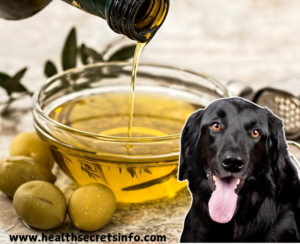can dogs eat egg shells? What i learned from my own experience

Have you ever found yourself cracking an egg, looking at the shells, and thinking, “Can my dog eat these?” As dog owners, we’re always wondering what’s safe and healthy for our furry friends. Eggshells seem like they’d be harmless—and maybe even beneficial—but are they really okay for dogs to eat? The answer is yes! Eggshells are packed with calcium, which is great for your dog’s bones and teeth. But there’s more to it than just handing your dog a crunchy shell. In this post, I’ll share what I’ve learned about the benefits, risks, and best ways to feed eggshells to your dog based on my own experience.
If you’ve ever wondered how to safely add eggshells to your dog’s diet, keep reading. I’ll explain everything from the nutritional benefits to the best way to prepare eggshells, and how much is safe to give. Let’s dive into it!
Why Eggshells? The Surprising Benefits for Your Dog
You might be wondering why anyone would give eggshells to their dog in the first place. The short answer: Calcium.
Eggshells are an excellent natural source of calcium, which is essential for keeping your dog’s bones and teeth strong. Calcium also supports muscle function and helps regulate their nervous system. If your dog is on a raw or homemade diet, they might not be getting enough calcium from other foods, and eggshells can be a perfect way to balance that out.
Here are a few reasons why feeding your dog eggshells might be beneficial:
- Calcium boost: Eggshells can help make up for any calcium deficiencies in your dog’s diet.
- Natural supplement: Instead of relying on store-bought supplements, eggshells offer a more natural way to support your dog’s health.
- Sustainability: If you hate wasting food, using eggshells is a great way to reduce waste and get the most out of your groceries.
How to Prepare Eggshells for Your Dog
While eggshells are great for your dog, there’s a right way to serve them. You can’t just toss them a raw eggshell without some prep.
Should You Use Raw or Cooked Eggshells?
Dogs can eat both raw and cooked eggshells, but here’s the catch—raw eggshells might carry Salmonella, which can be harmful to both you and your dog. To be on the safe side, I prefer to bake the eggshells before feeding them to my dog. A quick 10-minute bake at 300°F kills any bacteria and makes the shells a little easier to work with.
Whole or Ground?
Another important step is making sure the eggshells are easy for your dog to eat. Whole eggshells can be sharp, and larger pieces might irritate their digestive system. That’s why I always grind the shells into a fine powder before adding them to my dog’s food.
It’s easy to do! Here’s how:
- Clean: Rinse the eggshells to remove any remaining egg white.
- Bake: Pop the shells in the oven for 10 minutes at 300°F to kill any bacteria.
- Grind: Once the shells have cooled, grind them into a powder using a coffee grinder, blender, or mortar and pestle.
Now you’ve got a fine eggshell powder that you can sprinkle onto your dog’s food!
How Much Eggshell Should You Give?
Now that you’ve prepared the eggshells, the next question is: how much should you actually give your dog? Like most things in life, moderation is key. Too much calcium can be harmful, especially for puppies or dogs with certain health conditions.
As a general rule:
- Small dogs: ¼ teaspoon of eggshell powder per day.
- Medium dogs: ½ teaspoon of eggshell powder per day.
- Large dogs: 1 teaspoon of eggshell powder per day.
I personally give my dog a little sprinkle of eggshell powder once or twice a week, mixed in with his food. It’s enough to give him a calcium boost without overloading his system.
Related
My Dog’s Reaction to Eggshells
So, what did my dog think of all this? The first time I tried giving him whole, baked eggshells, he wasn’t exactly a fan. He sniffed it, gave me a look, and walked away. Not surprising, since whole eggshells are a bit of a strange texture for most dogs!
But when I ground the shells into powder and mixed it into his food, he didn’t even notice. Now, it’s part of our regular routine. Every once in a while, I add a little eggshell powder to his meals, and he’s happy as can be. It’s an easy way to give him extra nutrients without changing his diet too much.
Potential Risks of Feeding Eggshells
While eggshells are generally safe, there are a few things to watch out for. The biggest risk comes from overfeeding. Too much calcium can cause problems like bone deformities in puppies or kidney issues in older dogs. That’s why it’s so important to stick to small amounts and talk to your vet if you’re unsure about how much calcium your dog needs.
Other risks include feeding your dog sharp, unground shells, which could potentially damage their digestive system. Always make sure to grind the shells finely to avoid this issue.
Conclusion: A Simple Way to Boost Your Dog’s Health
As you can see, feeding your dog eggshells can be a great, natural way to boost their calcium intake and support their overall health. It’s easy to prepare and can fit right into your dog’s regular diet without any fuss. If you’re curious about trying it out, give it a go! Just remember to start small and always check with your vet if you have any concerns.
Have you tried feeding your dog eggshells? Let me know how it went in the comments!
FAQs
Can I feed my dog raw eggs with the shell?
Yes, but it’s safer to bake the shells first to kill any potential bacteria.
How often should I give my dog eggshells?
Once or twice a week is usually enough for most dogs. Always start small and see how your dog reacts.
Can puppies eat eggshells?
Puppies can eat eggshells, but be careful with the amount of calcium you’re giving them. Too much can cause issues with bone development, so always check with your vet first.
What’s the best way to feed eggshells to picky dogs?
Grinding the eggshells into a fine powder and mixing it with wet food or a favorite treat usually does the trick!












